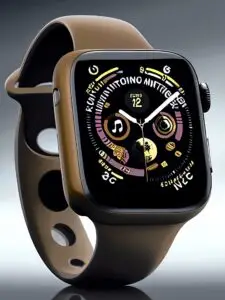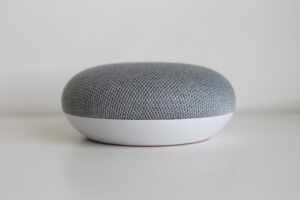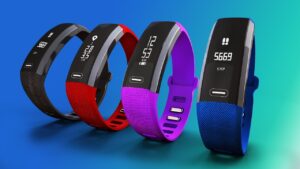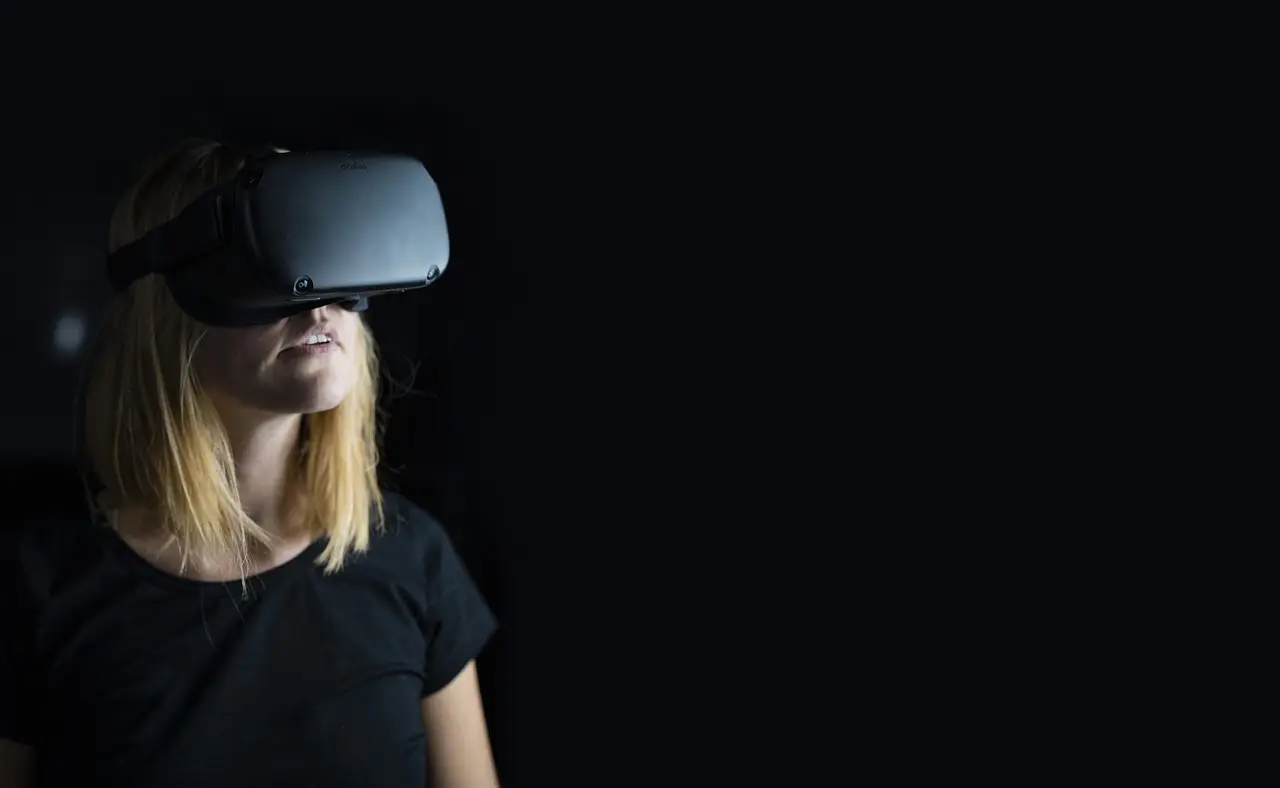Wearable technology has come a long way from its humble beginnings. Once seen as niche gadgets, today’s wearables—from smartwatches to fitness trackers—are integral to our daily lives, blending seamlessly with our routines and habits. But as technology continues to evolve, what does the future hold for wearable tech? In this article, we’ll explore upcoming innovations, emerging trends, and bold predictions that will shape the next generation of wearables, offering a glimpse into how they might revolutionize our lives in the years to come.
1. Advanced Health Monitoring of wearable tech

Current State:
Wearable technology has already made significant strides in health monitoring. Devices like the Apple Watch and Fitbit offer heart rate tracking, sleep analysis, and even ECG readings. However, these features are just the beginning.
Future Innovations of wearables:
- Continuous Glucose Monitoring: Future wearables may incorporate non-invasive glucose sensors, providing real-time monitoring for people with diabetes or those interested in managing their metabolic health. Companies like Abbott and Dexcom are leading the way, and we can expect to see these technologies integrated into more consumer-friendly devices.
- Blood Pressure Monitoring: Integrating accurate blood pressure monitors into wearables will become more common. This innovation will provide users with ongoing insights into their cardiovascular health without needing to visit a clinic.
- Advanced Biometrics: We can anticipate wearable technology that analyse more detailed biomarkers, such as hydration levels, blood oxygen saturation, and even stress hormones. These insights will allow for a more comprehensive understanding of personal health and wellness.
Impact:
These advancements of wearable technology will enable individuals to manage their health proactively, potentially catching issues before they become serious and leading to more personalized health and wellness recommendations.
2. Enhanced Augmented Reality (AR) Capabilities

Current State:
AR technology has already made its mark with devices like Microsoft’s HoloLens and Magic Leap. However, these wearable technology systems have often been bulky and expensive, limiting their appeal and practicality.
Future Innovations:
- Lightweight AR Glasses: With wearables, we’re on the cusp of seeing more practical, lightweight AR glasses that blend seamlessly with daily life. Companies like Apple and Meta are rumoured to be working on AR glasses that are both stylish and functional, integrating digital information into our field of view without being obtrusive.
- Improved AR Integration: Future AR devices will feature advanced spatial mapping and object recognition, enhancing the way we interact with our environment. For example, AR glasses might display contextual information about the objects and people around us, making navigation and information retrieval more intuitive.
- Enhanced AR for Remote Collaboration: AR will play a pivotal role in remote work and collaboration, providing virtual meeting rooms where participants can interact with 3D models and digital overlays as if they were physically present.
Impact:
Enhanced AR capabilities will redefine how we interact with digital content, creating more immersive experiences for both personal and professional use. Wearable technology will revolutionize fields like education, training, and entertainment by blending the digital and physical worlds seamlessly.
3. Seamless Integration with Smart Environments

Current State:
Smart home technology is advancing, with devices like smart speakers and thermostats becoming increasingly common. Wearable technology has begun to interact with these devices, but the integration is still relatively basic.
Future Innovations:
- Context-Aware Devices: Future wearables will have improved context-awareness, allowing them to interact more intelligently with smart home environments. For instance, your smartwatch might adjust your home’s lighting and climate based on your activity levels and preferences.
- Smart Clothing: We can expect to see more integration of wearable technology into clothing, with garments that can monitor health metrics, adjust to environmental conditions, and even charge your devices wirelessly.
- Unified Ecosystems: Wearables will become integral to unified smart ecosystems, where they seamlessly communicate with other devices, from home assistants to autonomous vehicles, creating a more cohesive and automated experience.
Impact:
These innovations will create a more integrated and responsive living environment, enhancing convenience and personalization. Wearables will play a crucial role in managing and interacting with our smart homes, making wearable technology more intuitive and accessible.
4. Breakthroughs in Battery Technology

Current State:
Battery life remains one of the biggest challenges for wearable technology. While improvements have been made, many devices still require daily charging or have limited operational time.
Future Innovations:
- Extended Battery Life: We can anticipate significant advancements in battery technology, including longer-lasting batteries that require less frequent charging. Innovations such as graphene batteries and advanced energy-dense materials may become more prevalent.
- Wireless Charging: Future wearables might feature more efficient wireless charging capabilities, allowing users to charge their devices through proximity or even kinetic energy from movement.
- Energy Harvesting: New methods for energy harvesting, such as capturing energy from body heat or ambient light, could extend battery life and reduce the need for frequent charging.
Impact:
Enhanced battery technology will make wearables more practical and less obtrusive, addressing one of the primary concerns of current devices. Longer battery life and improved charging methods will contribute to a more seamless and hassle-free user experience.
5. AI and Machine Learning Integration

Current State:
Artificial intelligence (AI) and machine learning are already making their mark in wearable technology, primarily through health and fitness tracking. However, these capabilities are still in their nascent stages.
Future Innovations:
- Personalized Insights: Future wearables will leverage AI to provide highly personalized health insights and recommendations. By analysing patterns and data collected over time, these devices will offer tailored advice on diet, exercise, and lifestyle changes.
- Predictive Analytics: Advanced machine learning algorithms will enable wearables to predict potential health issues before they manifest. For example, a wearable might identify early signs of a potential heart condition based on trends and anomalies in heart rate data.
- Contextual Awareness: AI will enhance the contextual awareness of wearable technology, allowing them to understand and respond to complex scenarios. This might include adjusting notifications based on your activity level, location, or even mood, providing a more intuitive user experience.
Impact:
AI and machine learning will revolutionize wearable technology by making them smarter and more proactive. The ability to offer personalized and predictive insights will empower users to make informed decisions about their health and lifestyle, leading to better overall well-being.
6. Advanced Gesture and Voice Controls
Current State:
Gesture and voice controls are already present in some wearable devices, but they often have limitations in terms of accuracy and responsiveness.
Future Innovations:
- Enhanced Gesture Recognition: Wearables will feature advanced gesture recognition capabilities, allowing for more intuitive and accurate control. For example, you might be able to control your smartwatch or AR glasses with precise hand movements or finger gestures.
- Improved Voice Assistants: Voice control will become more sophisticated, with voice assistants capable of understanding complex commands and interacting more naturally. These assistants will be able to handle multi-step tasks and offer contextually relevant responses.
- Haptic Feedback: Advanced haptic feedback will provide users with more tactile and immersive interactions. For instance, wearable technology devices could use vibrations to offer navigation cues or notifications in a more subtle and effective manner.
Impact:
These advancements in gesture and voice controls will make wearables more user-friendly and accessible. They will enable more natural and efficient interactions, reducing the need for physical buttons and making wearable technology easier to use in various scenarios.
7. Fashion and Customization

Current State:
Wearable technology has often struggled with blending functionality and style. Many devices prioritize technical features over aesthetics, leading to a disconnect between fashion and function.
Future Innovations:
- Customizable Designs: Future wearables will offer greater customization options, allowing users to personalize the appearance of their devices. This could include interchangeable bands, customizable watch faces, and even 3D-printed elements.
- Wearable Fashion Integration: Wearables will become more integrated with fashion, with designers and tech companies collaborating to create stylish and functional devices. This might include smart fabrics and accessories that seamlessly incorporate technology.
- Adaptive Aesthetics: Wearables could feature adaptive aesthetics, changing their appearance based on the user’s preferences, environment, or even the occasion.
Impact:
By bridging the gap between wearable technology and fashion, wearables will become more appealing and versatile. Customization and style will enhance the user experience, making technology an integral and fashionable part of daily life.
Conclusion
The future of wearable technology promises to be both exciting and transformative. As we look ahead, innovations in health monitoring, AR capabilities, smart environments, battery technology, AI integration, and more will redefine how we interact with technology. Wearables will become more integrated into our daily lives, offering enhanced functionality, personalization, and sustainability.
Wearable technology has already made significant strides in reshaping our daily lives, particularly in health monitoring, communication, and navigation. While challenges such as privacy concerns and social disconnect remain, the benefits often outweigh the drawbacks. As technology continues to advance, it will be fascinating to see how wearables evolve and further integrate into our routines, ultimately shaping a healthier, more connected future. Embracing these innovations while remaining mindful of their impact will be key to maximizing their potential in our everyday lives.

